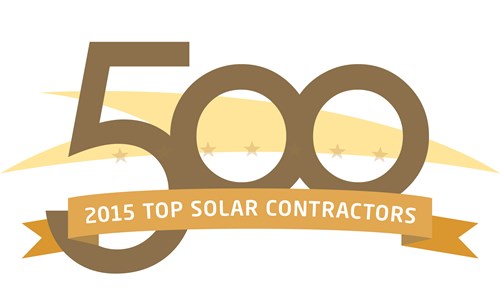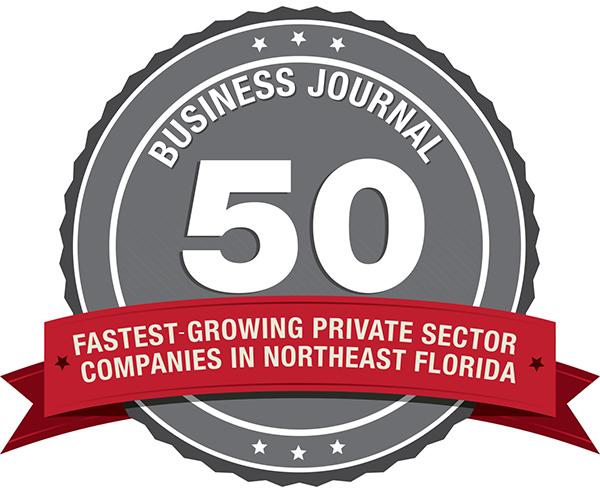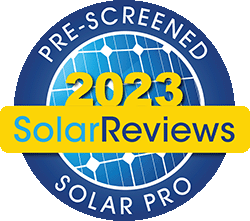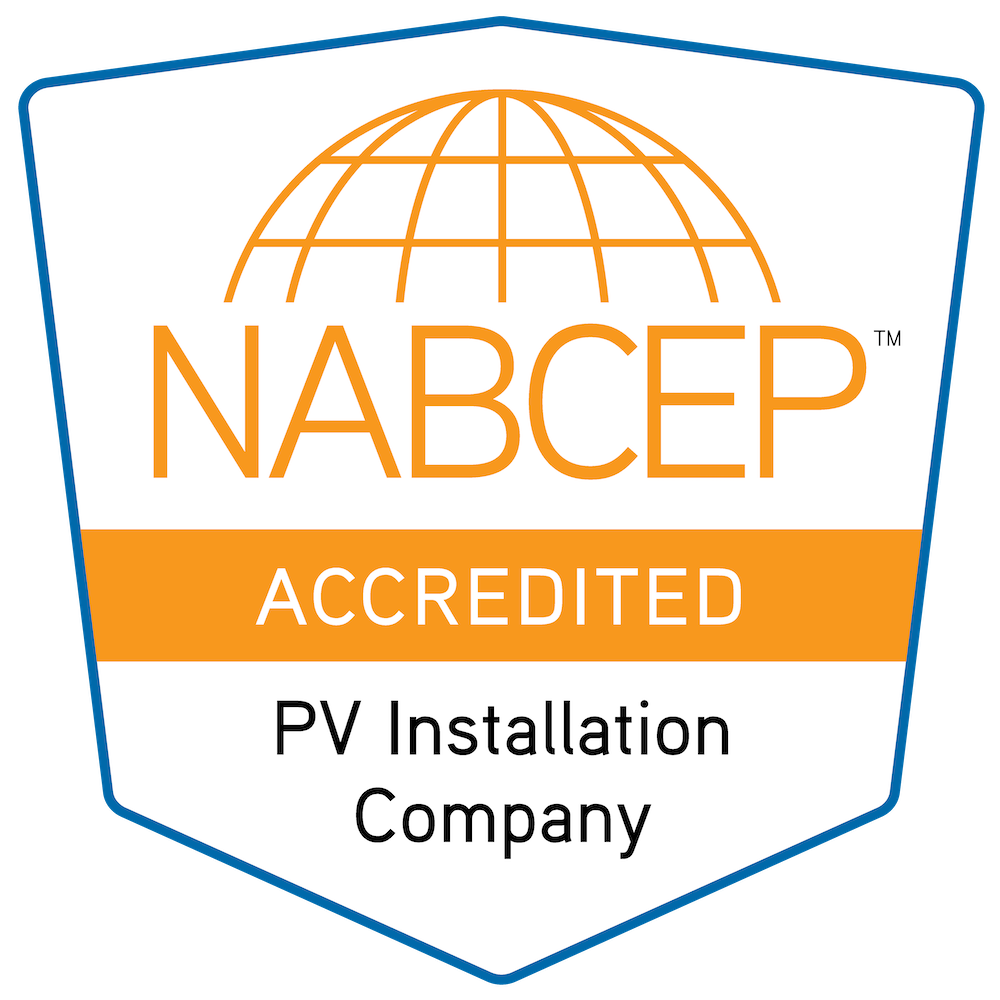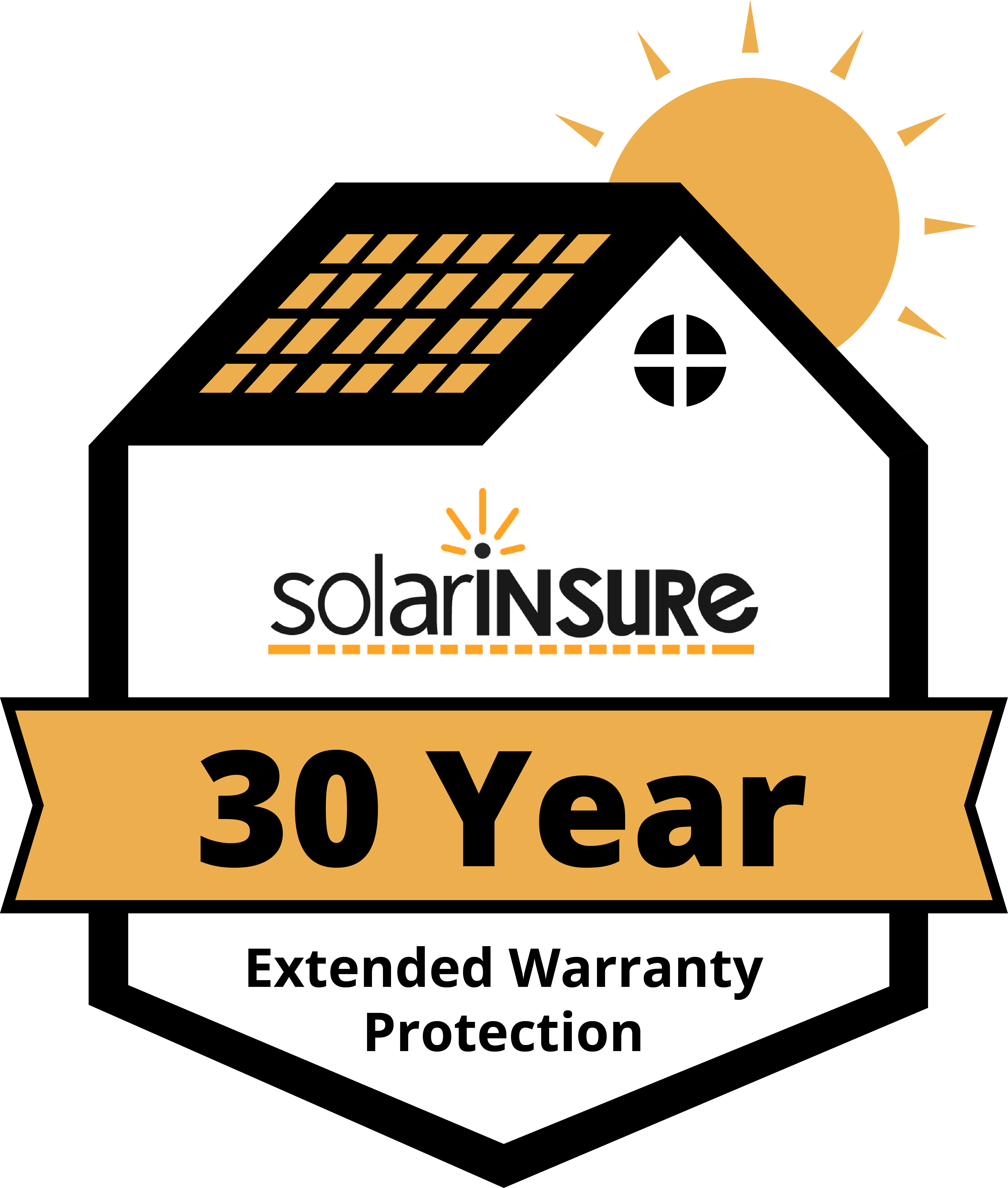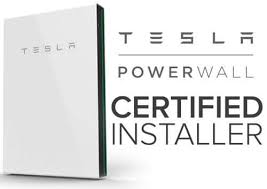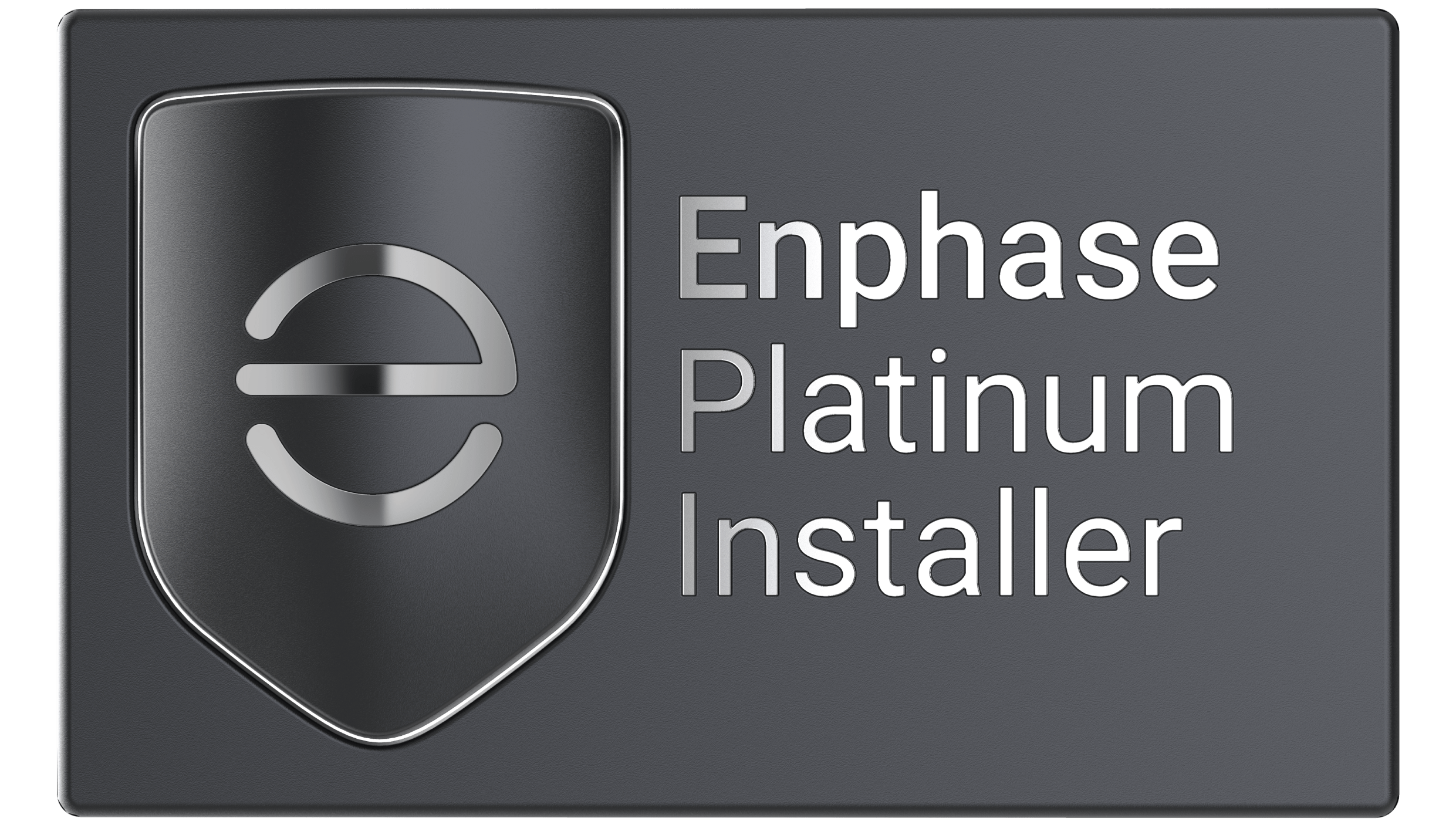What is the Difference Between Renewable and Nonrenewable Resources?
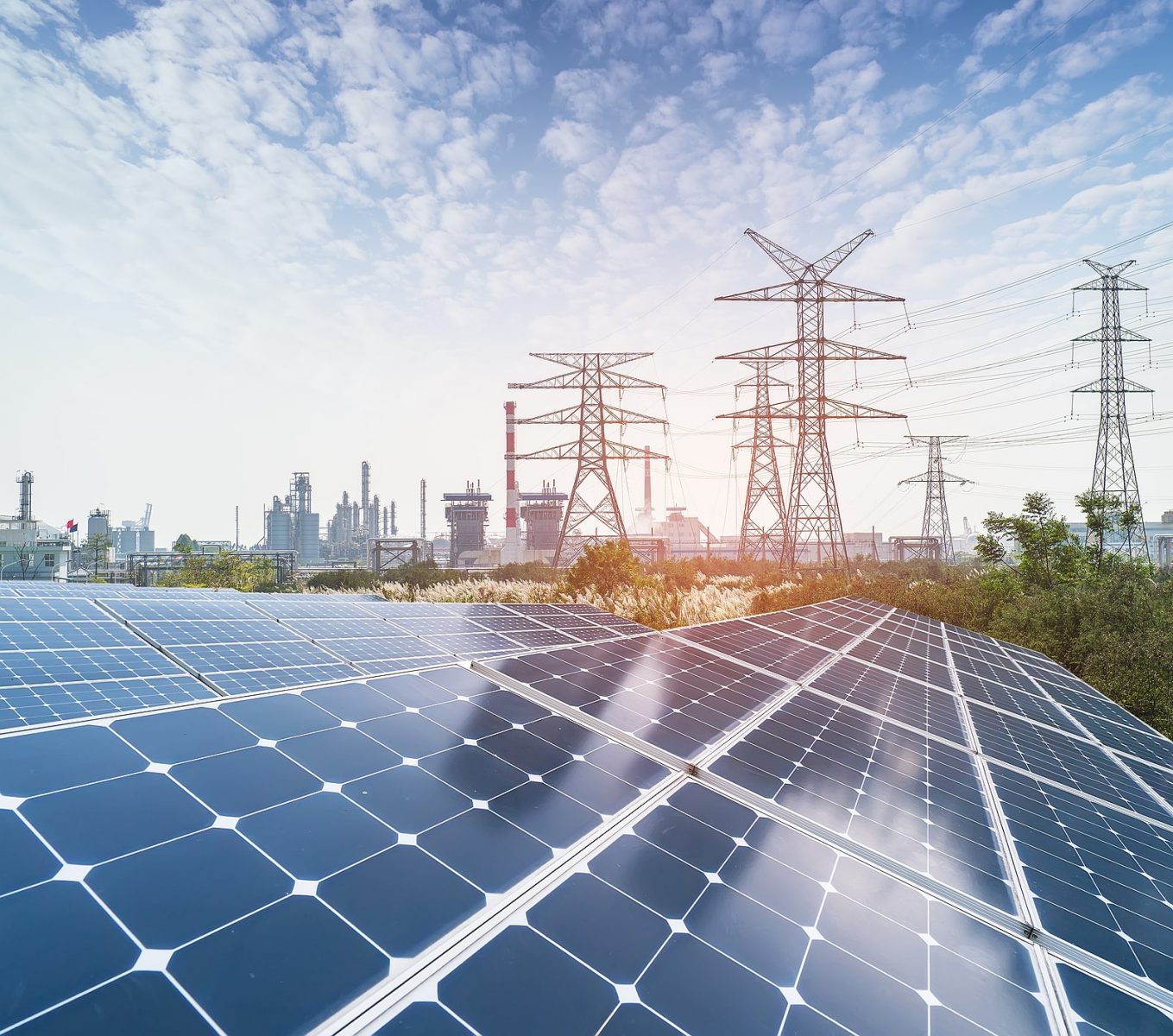
Humans use both renewable and nonrenewable resources daily. But what constitutes a resource as renewable or nonrenewable? As the world continues to use more sustainable energy sources, people are finding alternative ways to fuel the world, looking to the sky, the sea, and deep within the earth. While many may be familiar with solar energy and its ability to power houses, charge cell phones and heat water, among other things, there are a variety of other resources that can yield the same results as solar, but some are renewable while others are nonrenewable. Have you ever found yourself asking the following:
- Is natural gas renewable or nonrenewable?
- Why is water a renewable resource?
- Are any resources inexhaustible?
- What is the difference between renewable and nonrenewable resources?
Keep reading to find the answers to these questions and more!
What does renewable mean?
Renewable means that it can be replenished naturally over short periods of time. There are five major renewable energy sources: solar, wind, water, biomass and geothermal. These resources are limited in their availability at any time because they come from the earth. While the sun rises each day, when it is cloudy its ability to generate power becomes limited.
What is the difference between renewable and nonrenewable resources?
While renewable resources are replenished relatively quickly, nonrenewable resources take much longer to be restored. Coal, nuclear, oil and natural gas are nonrenewable energy resources that are available in limited supplies.
You might be familiar with the term fossil fuels. Oil, natural gas and coal are fossil fuels that were formed in the earth over millions of years from dead plants and animals. Pressure and heat transformed the remains of the plants and animals into oil, which is found under many layers of rock and sediment.
Power plants that use nonrenewable resources can produce more power on demand. So, on a hot day when many people are running their air conditioners, power plant operators can increase the energy production, which isn’t possible with renewable resources.
Which resources are renewable and nonrenewable?
Is geothermal renewable or nonrenewable?
In Greek, geo means earth and therme means heat, so geothermal is heat within the earth. Heat is continuously produced deep inside the earth’s core from the decay of radioactive particles, which is a process that happens in all rocks, making it renewable. This resource is used to heat buildings, generate electricity and heat water for bathing.
Is wind renewable or nonrenewable?
Wind is a renewable resource. Wind turbines are used to convert wind into energy without releasing emissions that pollute the air or water. These turbines also reduce the electricity generation from fossil fuels, resulting in less carbon dioxide emission and lower air pollution according to the U.S. Energy Information Administration (EIA). Using wind has fewer environmental effects than other energy sources when producing energy.
Is biomass a renewable resource or nonrenewable?
An organic material derived from plants and animals, biomass is a renewable resource. Storing chemical energy from the sun, biomass is produced by plants through photosynthesis. A versatile resource, biomass can be burned directly for heat or turned into renewable liquids or gaseous fuels. Until the mid-1800s, biomass was the largest source of total annual U.S. energy consumption, and in 2020 provided 5% of total primary energy use in the United States. To this day, biomass serves as an important fuel for many developing countries for their cooking and heating needs.
Is natural gas renewable or nonrenewable?
Natural gas is formed from the remains of sea plants and animals that died 300-400 million years ago, making it a nonrenewable resource. Once natural gas is extracted, it’s sent to a processing plant so it can be cleaned and separated into methane, propane and butane. Methane comprises 90% of natural gas.
Why is water a renewable resource?
Water can be found both underground and on the surface of the earth in rivers, oceans, lakes and streams. Some of these bodies of water are replenished through snowmelt and when it rains. Here are seven other ways water is renewable:
- Water has a rain cycle. Water evaporates, condenses into droplets and then falls back onto the earth into the various bodies of water to replenish them. If theres sufficient rainfall, water remains a renewable resource.
- Water can be conserved to help replenish water reservoirs when droughts happen. Some ways to conserve water include creating a rain garden, installing a greywater system, having a water-efficient dishwasher, and more.
- Water evaporates into a liquid vapor that later condenses, turning into precipitation. According to GreenCoast, “90% of water in rivers, lakes and oceans go through such transformation, and so water can later be replenished when the vapors condense.”
- Water condenses as part of the water cycle forming clouds first and then rain, which then falls to the earth and replenishes water sources.
- Water can be recycled and used in agricultural fields and gardens, or treated and used for drinking, cooking and other residential and business complex centers.
- Water is sustainable because it can be reused, thus reducing the dependence on other natural bodies of water.
- Rainwater can be harvested and diverted back to the earth to recharge the groundwater by connecting outlet pipes from rooftops with gutters.
Is solar energy renewable or nonrenewable or inexhaustible?
Solar energy is renewable and inexhaustible. The sun is one of the most important sources of energy for life forms on earth. The energy from the sun is harnessed using a variety of technologies and converted and used in lieu of fossil fuels because it is sustainable and inexhaustible, meaning it won’t run out unlike fossil fuels that are finite. There are numerous benefits to using solar power as it reduces air and water pollution, reduces the need for nonrenewable resources and more.
Solar Myths

You’ve probably seen solar photovoltaic (PV) panels popping up on rooftops all over Northeast Florida, and wondered whether or not solar really works. There are a number of popular misconceptions about solar power, and often when we speak to prospective clients, they have heard some myths. Coal companies, oil companies, and utilities are more than happy to have their customers keep believing in these myths, and solar companies around the country are working hard to dispel these distortions.
A1A Solar Contracting is the leading solar contractor in our region, with hundreds of happy customers who have experienced first-hand that solar is a fantastic financial decision.
1: My HOA won’t allow solar
Homeowners associations can be a bit scary, for they do wield a great deal of power when it comes to modifying the exterior of your home. They can dictate the length of your grass, the colors you are allowed to use, and what trees you have in your yard. Furthermore, they can place a lien on your home and impose significant fines for non-compliance. For this reason, one of the first questions homeowners always ask is “what about my HOA?”
Homeowners associations are not legally allowed to prevent you from placing solar on your roof, and they know it. In fact, if they take legal action, by federal law, the HOA will be on the hook for your legal fees. The associations are typically very easy to work with when it comes to getting your solar project approved. A1A Solar will handle this process for you, working on your behalf to obtain the HOA letter. We typically avoid placing panels on the front of a home located within a community that has homeowners association; we will do so at the customer’s request, but only if it makes a significant difference in the system’s production.
2: Solar requires a great deal of upkeep and maintenance
PV solar is astonishingly easy to maintain, since there are no moving parts. Solar arrays are built to withstand extreme heat and weather, including hurricanes and hail. The only upkeep required is to keep the panels free of debris and dirt. Typically the panels should be cleaned about once a year. Pollen tends to be the biggest factor in our area, which will accumulate in the spring and decrease panel efficiency.
Cleaning takes almost no time, using a soft-bristle RV brush and a garden hose. If you don’t feel like bothering with the cleaning, you can always call A1A Solar, and we can put you on our cleaning schedule for a small fee.
3: Installation presents a big hassle
Our average install takes only about three days, from start to finish, including the necessary electrical work. We handle all of your permitting with the municipality, the utility company, and the HOA. We schedule our installations in advance, and will work around your schedule to make the install go smoothly.
Installs are hassle free, and our crews are all composed of A1A employees because we do not subcontract any work. This means that you can expect excellent customer service and professionalism at every phase of your installation, from your consultation with a sales representative, to your interactions with our office staff and engineers, to the hard working men and women who will put the panels on your roof.
4: The monthly payments are too high
As soon as your array comes online following your meter-swap, you will notice a huge reduction on your electric bill. This means that while you are making a solar payment, you are only paying a fraction of your previous electric bill. The more panels you have, the greater the percentage of your electricity you will offset with solar.
A solar investment is essentially revenue-neutral during the first seven years, meaning your solar payment is roughly the same as what you are already spending on your electric bill. And as utility rates continue to climb, during the last few years of your finance period, you will likely be paying less with solar. Of course, after your system is paid for, you can look forward to decades worth of electricity for free. Our motto is “why pay for energy, when sunshine is free?”
FPL announced a rate hike that will go into effect on January 1, 2017. By going solar, homeowners can essentially freeze inflation in place, avoiding paying more for electricity in the future.
5: Solar doesn’t work when it’s cloudy
As long as the sun is shining, your solar array is generating power, whether or not it’s cloudy, rainy, or even snowing. UV rays penetrate cloud cover, and hit the panels as long as the sun is up. However, during extensive cloudy days, your system will not harvest as much energy as it will on clear days.
Our engineers use advanced software which includes weather-prediction data for specific areas, and our projections take historic weather patterns into account.
6: Solar is too expensive
When you compare the cost of what you will spend over the next 25 years on electricity with the cost of your PV array, you will see that solar represents a huge financial swing in your favor. The average homeowner will save between $40,000 and $50,000 over the life of a system, and this doesn’t include the significant additional monetary value solar brings to homes.
Prices have dropped over the last decade, efficiencies have increased, and utility rates have gone up. As an investment in your future, solar is far ahead of the stock market, money market accounts, or savings. A typical first year annual percentage yield (APY) is around 7%.
With the 30% Solar Investment Tax Credit, the federal government essentially pays for almost one-third of the cost of your system.
The most important thing to remember is that you are already spending the money on electricity; it’s not an option. Solar allows you to redirect the money you will spend with your utility company and invest it in your home, rather than squandering it every month with nothing to show for it.
7: Solar doesn’t work at night
While it’s true that sunshine is the most important component of a solar array, we sell “grid-tied” systems. This means that during the daytime, after your home’s electric needs are met, you are making more power than you actually use. The utility company will then sell that excess electricity to your neighbors, crediting you for it. At night, when you are no longer making power, you will draw back from the grid.
This process is called net-metering, and being connected to the grid means that no battery systems are necessary, because the extra electricity does not need to be stored.
8: Solar means I will be off the grid
Because most of the systems we sell are “grid-tied,” if the grid goes down, your array goes down with it. This is a safety measure to ensure that if utility workers are out restoring power and working on lines, the excess power your array would generate does not shoot back to the grid and electrocute a lineman. In the event of a power outage, you will not have electricity, and there is an additional safety measure required by the utilities in the form of a manual automatic disconnect switch that we install near your electric meter to make sure that our workers are safe.
If you’d like to have the ability to maintain electricity even when the grid goes down, we offer solutions. We sell battery-back-up systems which store the excess power your array makes during the daytime, and which you can pull from at night. And if there is a power-outage, all of the extra power flows to your battery rather than the grid. During the night, you can draw from your battery, and power most of your home’s needs, with the exception of central air or heat.
We also offer generators which we can install and wire to work seamlessly in conjunction with your PV array and battery; generators are a more affordable option, and make sense for homeowners concerned about short outages during hurricanes, rather than a long-term outage that happens because of a cataclysmic event like war.
9: I should wait for better technology and price drops
Prices have bottomed out, after significant reductions over the last decade. Since 2009, prices have come down 70% according to National Geographic, spurred by the federal tax credit and an influx of panels manufactured overseas. (A1A uses panels made in the United States.)
Soft costs have remained stable, and steadily increased along with inflation: the cost of trucks, install crews, electricians, and overall operating expenses will never go down. While panel efficiencies continue to increase incrementally, the overall price-per watt is highly unlikely to go down significantly in the future. Part of the reason for this is that large corporations and utility companies are building huge large-scale arrays all around the world, reducing supply and increasing the demand for panels.
The technology used in solar panels is mature, and the technology itself has changed little since the 1960s. The materials used have evolved, and the efficiency of panels has gone up, but when comparing those increases with cost of waiting to install solar, the economics of going solar now far outweigh any benefit to be reaped by delaying. Solar works like an investment account, and the sooner you start to save, the more money you will save in the long run.
10: More people would have solar if it made sense
A common remark we hear from clients is “why doesn’t everyone have solar? It seems like a no- brainer.”
Solar is now exploding in North Florida, but we are still lagging behind the rest of the country when it comes to solar production. Despite the fact that Florida is number 4 for solar potential nationwide, we come in at 14 for overall harvest.
There are several reasons for this disparity, but the good news is that we’re gaining ground quickly, and as solar builds momentum, we’re seeing more and more of our neighbors with it.
One reason that more people don’t have solar is that for many years, the payback period was considerably longer than it is today. Now, we have many more financing options which make the payments completely affordable, and allow homeowners to go solar without any out of pocket expenses up front.
Another reason that more people don’t have solar… the myths just addressed in this article! Please help us spread the word that solar is good for the environment and also a great investment.
Solar Resources

Product Information
- A O Smith Residential Electric Water Heater Product Specification Sheet
- A O Smith Residential Electric Water Heater Warranty
- Enphase Energy IQ 6 and IQ 6+ Microinverters Data Sheet
- Enphase M250 Microinverter
- Generac 16/20/22kW Guardian Series Residential Standby Generators Data Sheet
- Generac Power Systems Warranty
- Ironridge Flush Mount Datasheet
- Jinkosolar Eagle PERC 60 Module
- LG Solar Module Warranty
- LG NeON2 Module Data Sheet
- Mission Solar PERC 60 Module Data Sheet
- SolarEdge Single Phase Inverters Specification Sheet
- sonnenBatterie eco – Gen 2 Data Sheet
- SmartFlower Data Sheet
- SmartFlower Warranty
- JA Solar JAP72S01 310-330 1500V Cypress Series Module
Legal Resources
Property owners’ rights to employ renewable energy technologies are protected by Florida law, which supersedes any homeowners’ association or deed restrictions.
Homeowner Resources
See how solar may considerably increase the value of your home.
Environmental Resources
Learn how solar technology helps the environment, both your own and the world’s.
- EPA Carbon Footprint Calculator
- Energy Star Program website
- Website for LEED (Leadership in Energy and Environmental Design)
- US Green Building Council website
General Info Resources
Here’s more helpful information on today’s solar technology.
Solar 101 For Homeowners


How does solar work?
Shopping for solar can be a daunting process, and the terms that get thrown around can seem intimidating at first. The goal of this guide is to break the process down into layman’s terms. Your best bet is to schedule a personal evaluation with one of our highly trained consultants, but this guide is a good place to start.
Sunlight hits the solar panels, and the photons generate DC current. Inverters convert the current from DC to AC, which is what you use in your home. During peak sun hours, your system typically generates more electricity than what you are using in your home. You will sell this excess back to the grid, and the utility company will credit you for it. Most utility companies in the area net-meter (JEA is the exception), which means they pay you what they charge you for the excess power. At night, your panels are no longer generating electricity, so you will draw from the grid.
During the spring and early fall, a system designed for a full off-set will produce enough electricity to generate credits on your electric bill. The concept is similar to “roll-over minutes.” During the winter and summer, you’ll consume the credits you accrued during the spring and fall.
System components
- Solar panels. We offer a variety of panels, and make recommendations based upon your goals. We offer SunPower, LG, Mission Solar, Canadian Solar, and other brands.
- Inverters. Our standard inverter is the Enphase IQ7Plus microinverter. We do install other inverters depending on the system, but the vast majority of our installs utilize Enphase microinverters.
- Racking system. The racking system attaches your panels to the roof. We engineer for 140 mph winds
- Electrical work. Some systems will require an electric panel upgrade, dependent upon system size and your utility company. A1A Solar is an electrical contractor, and all work is performed by employees.
Benefits of going solar
- Saving Money! The average homeowner will save $30,000-$50,000 over the life of their system. This is money you keep in your pocket, rather than hand over to your utility company.
- Increased property value! Homes with solar sell four times faster, and for more money than homes without solar.
- Energy independence! With solar, you are no longer at their mercy of the utility company, which may increase rates at their sole direction. Add batteries to the system, for real independence.
- Saving the planet! By going solar, you embrace the cleanest energy available in our area. No fossil fuels burned, zero emissions.
Solar energy is not new



Solar energy has grown in popularity in recent years. Yet despite its popularity, we are not new to using solar energy. In fact, people have been using the power of the sun for generations, whether hanging clothes outside for the sun to dry and sanitize them or planting a garden to use the sun’s rays to grow food. But, solar energy has been used in other ways long before modern solar panels were invented.
As early as 7th century B.C. humans used sunlight to light fires with magnifying glass materials. In 3rd century B.C., the Greeks and Romans used mirrors to harness solar power to light torches for religious ceremonies. In the late 1700s and 1800s, sunlight was sometimes used to power ovens for long voyages.
While we have used solar for generations, the power of the sun was mostly ignored in recent centuries with other forms of energy: coal, oil, nuclear, predominating. But the future is in clean energy so A1A Solar was founded in 2010 to provide highly qualified services in the design and installation of solar power plants for homes and businesses.

WHY DO WE DO WHAT WE DO?
The “what” is easy: A1A Solar makes happy customers by delivering solar plus storage solutions to our clients.
The “why?” Is more complicated. Owner Pete Wilking founded this company after serving as a Naval officer. He worked for another solar company in Jacksonville in operations and sales, before deciding he could do it better himself.
Filling a need
Pete believes first and foremost in a business model that makes customers happy. By delivering quality workmanship, the best materials, and excellent customer service, Pete believed that he could establish a company in Jacksonville that met a need. For over ten years, A1A Solar has steadily built a stellar reputation for quality and service.
Stewardship

We believe in the future of renewable energy, and that solar plus storage is an important step toward preserving the planet. The more companies and individuals takesteps to reduce their carbon imprint, the less fossil fuel is burned. Our local utility companies all use a mix of coal and natural gas. Florida Power and Light also uses nuclear energy. The less fossil fuel is burned, the better our environment will be.
<
The concept of stewardship is integral to the “why.” At A1A Solar, we believe in leaving the world a better place. Our ability to impact the world entire is limited, but we’re working to save it one rooftop at a time.
Independence
The ideas of liberty and freedom are wrapped into solar. In Florida, homeowners have no choice in utility companies. This means that depending on where you live, you will pay what the utility company tells you to pay. If the company pushes a rate hike on you, you have no recourse, no freedom to choose another company. The utilities act as monopolies.
The only way to have control over your electric bill is to go solar. We believe that this is a fundamental choice, and an innately American choice to make. We are a nation founded upon the ideals of personal liberty, and self-reliance. Going solar is as American as apple pie, sweet tea, and hot-dogs.

Security
We enjoy providing back-up power for customers who worry what will happen when the grid goes down. We believe that security is important to happiness, and that having solar plus storage is a great way to make people happy.
Community
A1A Solar is very much a part of the Northeast Florida community, creating good jobs for over twenty employees, donating to local charities, and actively engaging with other businesses through the Chamber of Commerce and many other local organizations.
As a small business, we have changed the lives of many for the better, and this, too, is a reason we exist as a company.
Get off the Grid

 Solar plus storage is smart
Solar plus storage is smart

Under Florida law, privately owned utilities are required to “net-meter.” This means that they pay solar customers for excess electricity essentially the same rate that they charge them. JEA, Jacksonville’s largest utility provider, is not privately owned, and they changed their net-metering policy effective April 1, 2018. Honest solar salespeople understand the impacts of this policy shift and explains this information to new customers. Out of town companies frequently either do not know or care, and this leads to both misconceptions and disastrous results.
What does it mean?

With most systems during peak sunlight hours, between 10:00 AM and 3:00 PM solar will power the house and still be generating considerable excess electricity. This electricity has no where to go but either back to the grid, or to a battery storage unit.
If the electricity goes back to the grid, the meter will spin backwards, and JEA will credit the homeowner at 3.25 cents per kWh. They charge a weighted rate of 12 cents per kWh, though. That means they’re paying wholesale, and charging retail.
A1A Solar strongly recommends adding storage

For this reason, A1A Solar strongly recommends adding storage to new installs within JEA service area. By adding storage to the solar system, homeowners capture the excess energy during peak sun hours, and draw from the battery during the evening. This preserves the economic benefits of solar for the homeowner, and it’s good for the environment since the more energy that is self-consumed the less coal gets burned.
Solar but no battery?

Alternatively, if you elect not to install a battery system but still want solar, we can design a smaller PV system which minimizes the amount of electricity sold back to JEA. For most customers without batteries, self-consumption accounts for roughly 2/3 of solar production. For this reason, we would recommend a PV system that did not exceed 66% of your current usage. In this scenario, you would want to maximize your solar harvest by running your a/c during the day, doing laundry during daylight hours so that you would be using the electricity you are generating rather than selling it back to JEA at a reduced rate.
Many companies do not bother to tell potential customers about the impacts of JEA policy upon new solar installations, and offer blatantly misleading proposals which show a much greater offset than the customer will actually see.
A1A Solar strives to over-deliver and under-promise, and as part of this philosophy, we use sophisticated software which provides a detailed production and financial analysis for our customers.
Hurricane Fast Facts
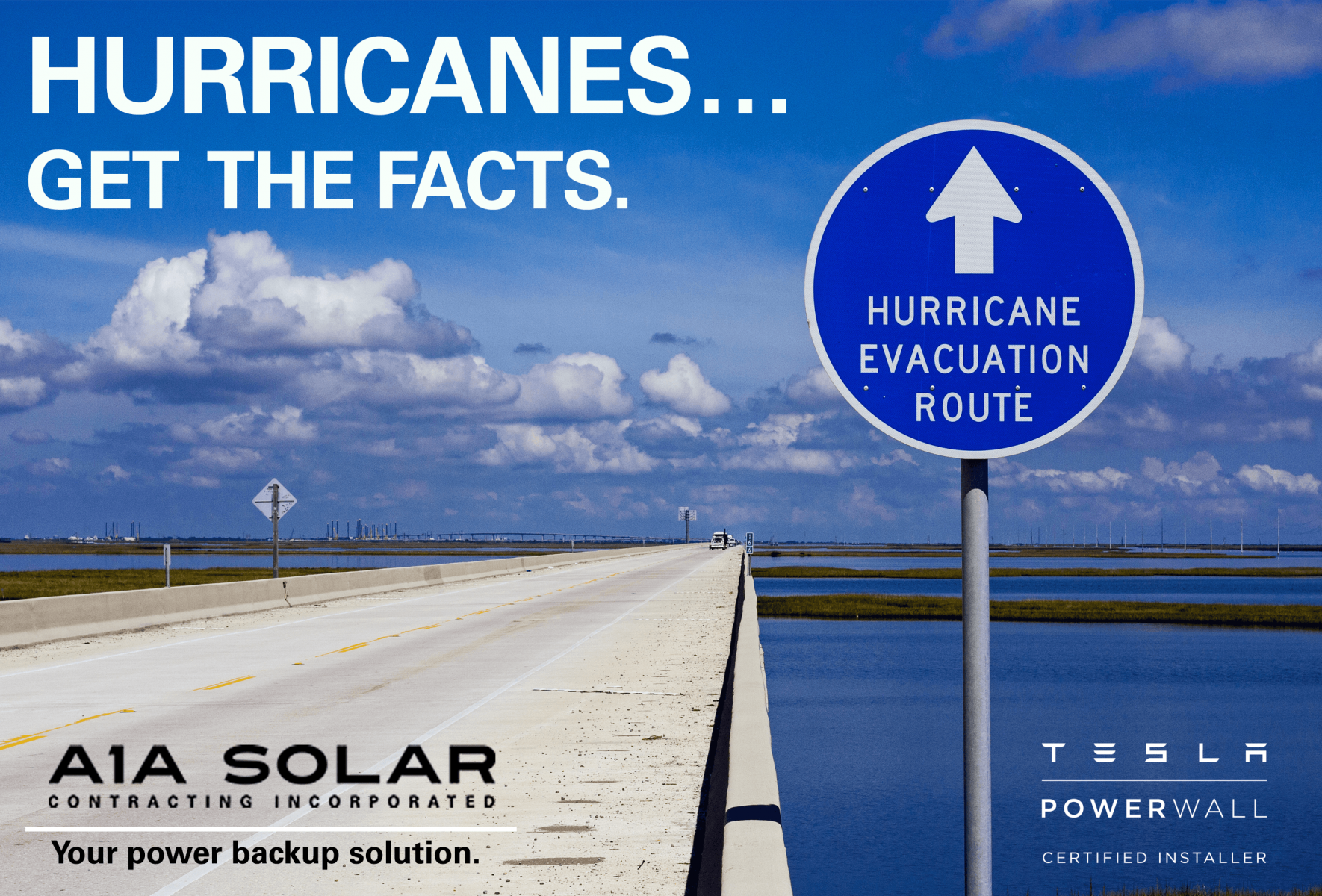
Hurricane Season

Hurricane season begins on June 1st and ends on November 30th. Summer’s hotter climate leads to warmer water which in turn forms hurricanes. Hurricane season , after cooler weather has started to roll in.
How Hurricanes Form

Hurricanes develop during interactions between warm air and warm water and can become the most violent storms on Earth. Also called typhoons or cyclones, the scientific term for all these storms is tropical cyclone. Only tropical cyclones that form over the Atlantic Ocean or eastern Pacific Ocean are called “hurricanes.” When the winds in the rotating storm reach 39 mph, the storm is called a “tropical storm.” And when the wind speeds reach 74 mph, the storm is officially a “tropical cyclone,” or hurricane.
Hurricane Categories

Hurricanes are measured according to a scale known as the Saffir-Simpson Hurricane Scale. This scale gives hurricanes a classification based on the average wind speed of the hurricane:
- Category 1 hurricanes have a wind speed of 74-95 mph
Category 1 hurricanes may be the weakest on the scale, but there is still a need for extreme caution. The winds are powerful enough to pound through a city and lightly pull apart buildings. This can form debris which is dangerous if it lands on people, pets or buildings. Power outages can also happen. - Category 2 hurricanes have a wind speed of 96-110 mph
The stronger the storm means greater potential for damage and danger. Hurricanes of this strength will bring flying debris, break windows and even uproot trees. Homes and buildings can fall victim to roof or siding damage while power outages lasting up to two weeks may follow. - Category 3 hurricanes have a wind speed of 111-129 mph
Category 3 hurricanes are beastly and strong enough to bulldoze past cities. Frame homes, mobile homes, apartment complexes and office buildings are at risk of major damage when a category 3 storm is on its way. You can prepare in advance by boarding up for protection. Destruction from flying debris is likely. Similar to category 2 storms, hurricanes of this strength can easily uproot trees and cause power outages lasting up to weeks after the storm. - Category 4 hurricanes have a wind speed of 130-156 mph
It’s important to plan an evacuation before a category 4 storm because it is strong enough to uplift roofs and trees, destroy mobile homes, frame homes, apartment complexes and other buildings. Power outages are extremely likely and can last months. - Category 5 hurricanes have a wind speed of over 157 mph!
As the highest level on the scale, category 5 hurricanes are, in simplest terms, devastating. They can level houses and destroy buildings of all sizes. Cities or islands on a category 5 hurricane’s path are likely to be uninhabitable for weeks to months due to the level of devastation.
How deadly are hurricanes?

How deadly a hurricane isn’t necessarily dependent on what category hurricane it is. Sometimes a Category 1 hurricane can be more deadly than a Category 3. It depends on how wide the storm is, how many storm surges it causes, and how much rainfall it gives off. Hurricanes cause most of their damage and death by means of flooding, high winds, high tides, and rip currents. If a lower-category hurricane is very wide, it might bring dangerous flooding to a huge swath of the country it hits, causing much more death than a smaller, higher-category storm.
Hurricane Terminology
Here are some common terms related to hurricanes.
- Eye — The eye of a hurricane is at the center of the storm and it’s also the storm’s most peaceful section due to the low air pressure and calm winds. Clouds are not present here either.
- Eye Wall — The hurricane eye wall is opposite of the storm’s eye because it’s the most dangerous part of the hurricane. This is where the heavy clouds and high-speed winds live.
- Rainband — The hurricane’s rainbands are spirals responsible for the storm’s heavy rainfall and flooding.
- Diameter — A hurricane’s diameter is measured from one side to the other.
- Storm Surge — A hurricane’s storm surge can have the most devastating impact on a city located along its path. They form when severe winds push toward the ocean’s shore, causing sea levels to rise significantly. This sends a catastrophic wave of water over any surrounding land. A storm surge is dangerous because they can produce waves reaching up to 20 feet. Storm surges can also extend for miles and miles, flooding cities
- Watch — A hurricane watch is slightly less severe than a hurricane warning because it means there is a chance hurricane conditions may occur within a certain area. You can expect to receive warning of a hurricane watch 48 hours in advance.
- Warning — A hurricane warning is put in place when certain areas are expected to experience hurricane conditions, such as winds of 74 mph or higher. Officials typically send out hurricane warnings 36 hours before winds strike.
Top States for Hurricanes

Florida, Texas, Louisiana, North Carolina and South Carolina. These are the top 5 states most likely to be on a hurricane’s path and it has everything to do with their proximity to all of the warm water found in the Gulf of Mexico or within the Atlantic Coast.
How To Prepare For A Hurricane?

Now that you know all about hurricanes, it’s time to prepare your family for the days leading up to the hurricane’s landfall. A great first step would to shop for non-perishables, organize a hurricane kit and board the exterior of your home.
Whether you are going to ride out a hurricane or evacuate, the damages as well as the power outages from a hurricane can last for weeks or more. A1A Solar has a range of power back up options including a combination of solar panels and Tesla Powerwall batteries which will help keep your home running smoothly even in long power outages.
We can help you stay powered up until sunny skies are out again…
Hurricane Hero: A Short Story


This time, the hurricane did not turn north.
Hurricane Hanna smashed into Northeast Florida packing 140 mph sustained winds, with the eye raking the coast from Ponte Vedra to Fernandina Beach.
Tina watched the news closely all week, as the storm bloomed from a category 1 to a category 4 in the warm waters of the Caribbean. The spaghetti models could not agree where landfall would be, even until the last day. She’d stocked up on food and water, and she knew that she’d be able to ride out the storm and the aftermath because she would have electricity, even if nobody else in her neighborhood did.
The wind howled and moaned like an enraged banshee and her house shook and groaned. Through the small window in her door, she watched the palm trees bend and twist in the pale light of the street lamp. Debris smacked and thudded into her house, as tree limbs, street signs, and yard furniture hurtled through the air. Transformers exploded down the street.
At 3:00 AM the street light went dark, along with the entire neighborhood.
Tina cheeked the Tesla App on her phone. The pair of Tesla Powerwalls were delivering power to her home, exactly as it was designed to do. If the lights even flickered, she did not notice. The Storm Watch software had automatically ensured that the battery would be charged to full capacity before the hurricane landed.
She watched the Weather Channel and fell back to sleep to the sound of wind and rain and thunder.
The next day, the feeder bands passed by and the scale of destruction began to emerge across the city. More than a million people without power. Storm surge flooding miles inland. Some areas would be without electricity for up to a month, as utility companies struggled to fix downed power lines and remove fallen trees.
Tina made herself a cup of coffee and scrambled some eggs, feeling grateful. She checked her Tesla app again, noticing that her solar array was powering her home and recharging her batteries. She had to smile.
The following day was blistering hot, temperatures in the mid nineties, and humid. Tina went for a walk in her neighborhood, picking her way carefully through streets choked with tree limbs and downed power lines. She made a point of checking on many of her friends and neighbors down the street.
 Mrs. Wilson, who lived across the street, was a sweet, elderly lady with diabetes who kept an immaculate garden and made the best pecan pie in Florida. Tina stored her insulin for her so that it would not go bad, and put some of Mrs. Wilson’s food in her refrigerator, and she also invited her over for to sit in the air conditioning for a much needed respite from the heat.
Mrs. Wilson, who lived across the street, was a sweet, elderly lady with diabetes who kept an immaculate garden and made the best pecan pie in Florida. Tina stored her insulin for her so that it would not go bad, and put some of Mrs. Wilson’s food in her refrigerator, and she also invited her over for to sit in the air conditioning for a much needed respite from the heat.
Her neighbors on either side were parents with young children. Tina ran an extension cord to both houses so that her neighbors could run their fans to stay cool and so they could let their children play video games. She let people come over to charge their cell phones and tablets.
Tina made her freezer available to neighbors, and stored steaks, roasts, and an assortment of frozen foods for them, glad that she herself would not face the task of throwing out rotting meat and cleaning out her refrigerator.
A few of her neighbors had gas generators, but as the outage dragged on, their noisy generators fell silent because there was no gas to be had. These folks, too, came by Tina’s house for help, and she gladly gave it.
 After three weeks, the power in the neighborhood finally came back on, but Tina only noticed because her neighbors came by to thank her and collect their food.
After three weeks, the power in the neighborhood finally came back on, but Tina only noticed because her neighbors came by to thank her and collect their food.
“God bless you,” Mrs. Wilson said, bringing over a fresh pie. “You may have saved my life.”
“I’m just glad I was able to help,” Tina replied.
From that day forward, whenever she walked her dog, people would smile and wave. They started calling her “The Hurricane Hero,” and Tina would just laugh, thinking that she hadn’t done anything anybody wouldn’t do.
“Well, that’s not entirely true,” Mrs. Wilson said. “You were the only one around here who was prepared; there wasn’t anybody else who could do what you did.”
That’s when Tina decided to leave a good review for A1A Solar, the team that had installed her solar + battery system.
Concerned About Power Outages?
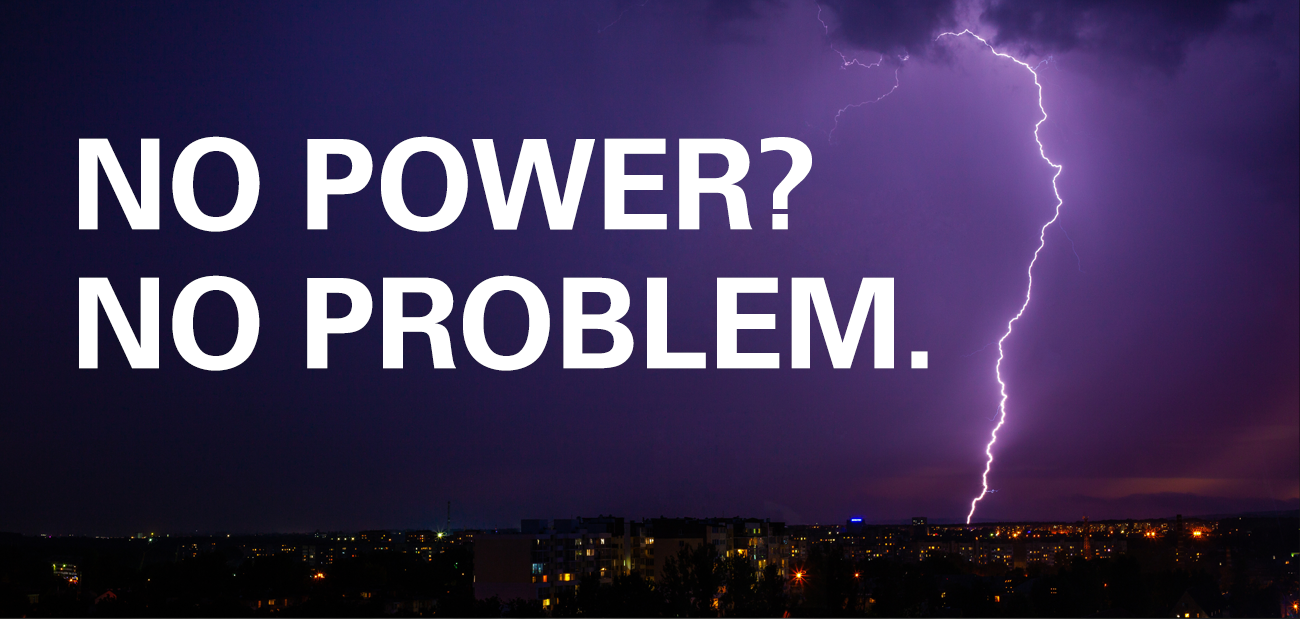
 As we head into hurricane season, power outages become a concern. Power outages can be caused by many circumstances. An outage, or “blackout,” occurs when something interrupts the flow of electricity to the end-user, and an outage can affect a few homes or an entire city —sometimes lasting for days.
As we head into hurricane season, power outages become a concern. Power outages can be caused by many circumstances. An outage, or “blackout,” occurs when something interrupts the flow of electricity to the end-user, and an outage can affect a few homes or an entire city —sometimes lasting for days.
Here are some of the things that can cause your power to go out:



Other Causes of Outages
- Vehicle Accidents — If an automobile accident to involve a pole, knocking it over or damaging the power line.
- Small Animals — Squirrels and other small animals have been known to chew through power lines, which can result in the electrocution of the animal and a quick surge of electrical power that damages the power line and causes an outage.
- Falling Trees & Branches — Falling trees and branches which land on power lines are a recurring cause of power outages. Trees can also trigger outages if they’re growing directly below a power line.
- Snow & Ice –– Fortunately in the Southeastern U.S. this is not that much of an issue

Whatever the reason for losing power, A1A Solar has a range of solutions to meet your needs from solar panels to back up batteries, we offer whole home power solutions. Plan ahead! Contact us today to discuss what is best for you.
Are You Prepared?
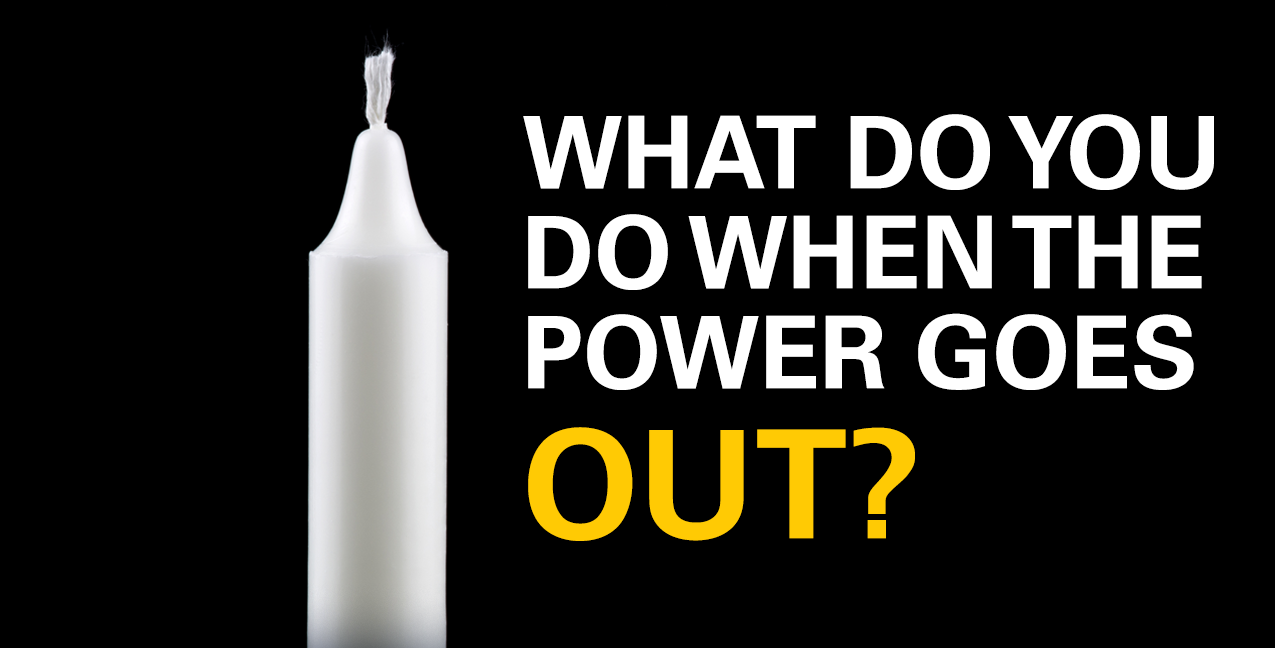
 When the Grid Goes Down… Are You Prepared?
When the Grid Goes Down… Are You Prepared?

An outage lasting longer than a few days would be almost unbearable.

If you already have a solar system installed, the next step is to add battery storage. If you don’t have solar on your home yet, you can add a PV system and a battery together, or you may opt for a whole-house generator.
A1A Solar Can Help

When the grid goes down, if you have a battery backup system and solar, your home has power. During the daytime, your solar array meets the energy needs of the house, with the excess stored in the battery. At night, you draw from the battery, and the next morning when the sun comes up, the process starts all over again.








